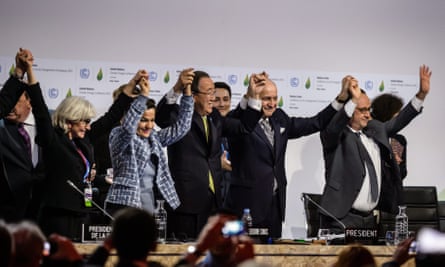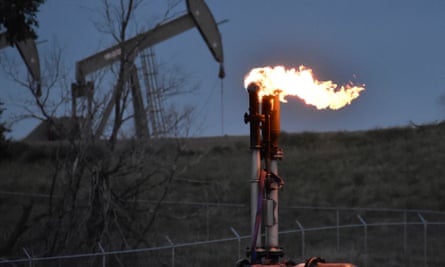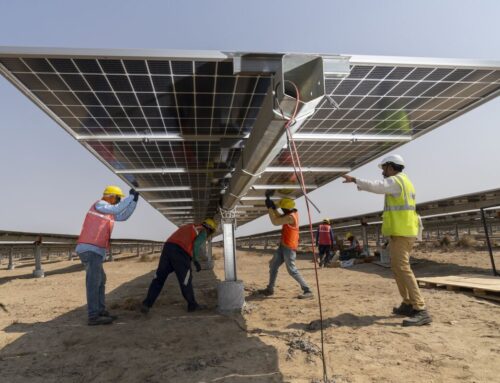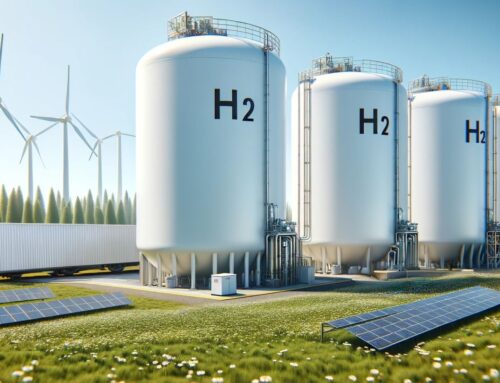From net zero to NDCs: your comprehensive Cop30 jargon buster
November 9, 2025
Cop
Cop30 will be the 30th conference of the parties to the UN framework convention on climate change (UNFCCC), the parent treaty to the 2015 Paris agreement. It takes place in Belém, near the mouth of the Amazon River in Brazil.
Mutirão
At recent Cops, hosts have taken to having special meetings based on traditional formats. This began in Durban in 2011, when, as the negotiations stretched long past their official deadline, heads of delegation moved into special indaba meetings, named after a traditional Zulu gathering of tribal elders. Since then, Cop28 in Dubai had its majlis, and Cop29 in Baku had a qurultay, modelled on a Turkic chieftains’ gathering.
At Cop30, delegates will be invited to a mutirão, a Portuguese word derived from the Indigenous Tupi-Guarani language that refers to a group coming together to work on a shared task.
Tropical Forest Forever Facility
Keeping forests standing is worth far more to the world than cutting them down, but that is not how standard economics work. Poor people living in forests, and the governments of forested countries, can find it difficult to resist exploiting the resource for short-term gain, from logging, ranching or conversion to agriculture.
The Tropical Forest Forever Facility aims to change those economics, by paying countries and communities to keep their forests standing. As far as Brazil’s president, Luiz Inácio Lula da Silva, is concerned, this is the flagship issue for Cop30. He hopes the fund could grow to be worth $125bn (£95bn), of which $25bn could come from developed country governments and public institutions, and the rest raised from private investors and the financial markets. So far, the fund has reached about $5bn. The UK is one major economy that has failed to contribute.
Global ethical stocktake
Under the 2015 Paris agreement, regular “global stocktakes” are the means by which countries are held to their promises – the stocktakes are an assessment of progress on meeting climate goals and showing what more needs to be done. Lula is taking the same principle, but applying it to the ethical dimensions of Cop: testing how far global climate policies are working for the poor, the disadvantaged, Indigenous people and other marginalised groups, and trying to ensure that they are also the beneficiaries of climate action.
To this end, Brazil has commissioned individuals and groups from around the world to lead and participate in its ethical stocktake. A report to be presented at Cop30 will focus on climate justice.
Loss and damage

One of the most contentious issues in climate finance is “loss and damage”. This refers to the most devastating ravages of extreme weather, so great that no amount of adaptation can help with them. Examples include hurricanes and typhoons, the devastating floods that hit Pakistan in summer 2022, or the droughts afflicting swathes of Africa.
Recovery from such devastation can take years, if it is ever achieved, and the infrastructure of developing countries, services such as health and education, and their chances of improving people’s circumstances can suffer permanent damage. The world’s poorest countries, which have done the least to cause the climate crisis, are most at risk.
In the past, some experts characterised loss and damage as a form of compensation or reparations for poor countries. However, this was unacceptable to developed and large developing countries, which refused to sign legal agreements potentially leaving them liable for unlimited future costs. So the discussion moved on to loss and damage as a form of rescue and rehabilitation for the countries suffering the most, addressing broader social and development issues as well as the immediate impacts of extreme weather.
Innovative forms of finance
Developing countries need more than $1tn a year in climate finance; developed countries have so far pledged $300m. The shortfall could be made up from “innovative finance” – new sources of cash that could help tackle the climate crisis.
Some of these are obvious – for instance, taxing fossil fuels or carbon emissions. Some countries slapped windfall taxes on oil and gas during the bonanza for fossil fuel companies that followed Russia’s invasion of Ukraine, and even the staid and conservative International Energy Agency called for such measures.
A wealth tax on billionaires also has widespread support from activists, though many developed country treasuries are privately hesitant. Brazil has proposed a wealth tax of 2% on billionaires that it says would raise $250bn and only affect about 100 families globally.
Levies on frequent flyers could be designed to fall only on the rich, or the minority of the global population who make more than one return flight a year. Aviation accounts for about 3% of global emissions and continues to grow. Imposing a small charge on shipping could also generate billions, could be easily collected, and is especially relevant as many ships are dirty and inefficient, and carry large quantities of fossil fuel around the world.
Another idea is to repurpose some of the hundreds of billions of subsidies that each year go to harmful agricultural practices, encourage overfishing, or benefit the fossil fuel industries.
Mitigation
Within the context of the UNFCCC, mitigation always means the reduction of greenhouse gas emissions.
Adaptation (sometimes known as resilience)
The world has already warmed by 1.1C to 1.3C above pre-industrial levels, and some of the impacts are irreversible, so even if emissions are cut drastically, we will still need to adapt to the impacts of more extreme weather.
Infrastructure, including transport and telecommunications networks, housing and rural areas will need to be adapted and protected, for instance by building railways less likely to buckle in the heat or roads less likely to melt, and houses that will not overheat.
However, climate finance for adaptation and resilience has lagged far behind that for mitigation.
UNFCCC
The UN framework convention on climate change, signed in 1992 at the Rio Earth summit, binds all countries – bar a handful of failed states – to “avoid dangerous climate change”. However, it did not set out in detail how to do so.
Kyoto protocol
The first attempt to turn the UNFCCC’s resolution into action was the 1997 Kyoto protocol, which set targets on emissions cuts for each developed country, stipulating a 5% cut in global greenhouse gases overall by 2012. Developing countries, including China, were allowed to increase their emissions. However, the protocol immediately ran into trouble when the US, which signed the treaty under Bill Clinton, could not ratify it owing to opposition in Congress.
The protocol eventually came into force without US backing in 2005, but by then was largely irrelevant, so countries began drafting a new treaty to fulfil the UNFCCC aims, resulting in the Paris accord 10 years later.
The Paris agreement

Forged at a historic summit in December 2015, this marked the first time developed and developing countries agreed to limit greenhouse gases in order to stay within set temperature limits. The main goal is to limit global heating to “well below” 2C above pre-industrial levels, while “pursuing efforts” to stay within the lower, safer threshold of 1.5C. Countries set targets to stay within those limits, in the form of nationally determined contributions.
NDCs
Nationally determined contributions are national plans containing targets on emissions cuts, usually pegged to 2030, and details on how they will be met. They form the heart of the Paris agreement. In the negotiations leading up to the Paris summit, countries were reluctant to accept “top-down” targets, such as those contained in the Kyoto protocol, which set a global goal for emissions reduction then divided up the cuts needed among the developed countries. Instead, they opted for each government to offer the emissions reductions it thought feasible.
This resulted in a set of NDCs submitted at Paris that would result in catastrophic heating of more than 3C. So the Paris agreement contains a “ratchet” mechanism by which every five years countries must return to the negotiating table with fresh commitments to bring emissions in line with the overarching temperature targets.
At Cop26 in Glasgow, countries agreed to tighten the ratchet, asking for new pledges every year. That has not really happened, however. Countries were supposed to update their pledges well ahead of Cop30, but by the eve of the conference fewer than 90 had.
1.5C
The Paris agreement contains two key goals, of limiting global heating to “well below” 2C, while “pursuing efforts” to limit temperature rises to 1.5C above pre-industrial levels. These goals have their roots in reports by the Intergovernmental Panel on Climate Change. The 2007 IPCC fourth assessment report suggested the world was likely to warm by at least 1.8C, even if measures were taken to limit emissions, and by 4C if emissions went untrammelled. Keeping warming to about 2C was regarded as the outer limit of safety, beyond which the impacts of climate breakdown – heatwaves, droughts, floods, sea-level rises, fiercer storms and other extreme weather – would become catastrophic and irreversible.
Some big emitters, including China, argued 2C was the only realistic limit and opting for a lower goal would be economically difficult. However, small island states pointed to science showing they were likely to be inundated by sea-level rises and storm surges at warming above 1.5C. The conflict was resolved in the compromise of two goals. A further IPCC report in 2018 found extreme weather and severe impacts from even a 1.5C rise, so for Cop26 the UK hosts made “keeping 1.5C alive” the core aim.
Temperatures have already breached the 1.5C limit, and most climate scientists believe that goal is already out of reach. However, many experts argue the target should be kept as the global aim, in order to try to ensure any overshoot is as small as possible.
Net zero
This basically means reducing greenhouse gas emissions as far as possible and then offsetting any remaining irreducible emissions – for instance, from industrial processes that emit CO2, or sectors such as aviation where alternative technologies are not available – by fostering carbon sinks, such as forests. The concept has come under attack from campaigners who argue that some companies and governments are assuming they can offset emissions rather than reduce them.
IPCC
The Intergovernmental Panel on Climate Change. The body of the world’s leading climate scientists, first convened by the UN and the World Meteorological Organization in 1988, has produced six comprehensive assessment reports since, each increasing in certainty and reinforcing the message that the climate crisis, caused by human actions that increase the levels of CO2 and other greenhouse gases in the atmosphere, is accelerating.
The first instalment of the latest IPCC assessment, released in August 2021, delivered the starkest warning yet. It found the climate crisis was “unequivocally” the result of human actions, was creating changes that in some cases were already “irreversible”, and that some of those changes were “unprecedented” in hundreds of thousands of years. The second and third parts, published in 2022, warned that the 1.5C goal was slipping out of reach, and that it was “now or never” for climate action.
The IPCC has been criticised for giving too conservative a view of climate science – its key findings, in the “summary for policymakers”, are subject to approval and amendment by governments before publication, which some say means they are unduly weakened.
Methane

A powerful greenhouse gas, which can trap heat in the atmosphere about 80 times more effectively than CO2. Whereas CO2 lingers in the atmosphere for about a century once released, methane degrades in a couple of decades to CO2. It comes from leaking fossil fuel infrastructure, such as oil wells and shale gas wells, and from animal husbandry and other agriculture. Many countries are hoping for progress on methane at Cop30.
SLCPs
Short-lived climate pollutants. These are compounds such as methane, hydrofluorocarbons and soot. They degrade or fall out of the atmosphere more quickly than CO2, but while active they can play a major role in heating the atmosphere, so actions to reduce them could buy humanity some time. For example, drastically limiting methane could reduce warming by as much as 0.2C, according to some estimates. Soot stains white snow and ice, and the dark surfaces absorb more heat. Hydrofluorocarbons are substitutes for the ozone-destroying chlorofluorocarbons, but some are capable of trapping more than 11,000 times as much heat as CO2.
Carbon offsetting
CO2 has the same impact on the climate no matter the source or location, so if a tonne of CO2 can be absorbed from the atmosphere in one part of the world it should cancel out a tonne of the gas emitted in another. In theory, companies, governments and individuals can cancel out the impact of some of their emissions by investing in projects that reduce or store carbon. Forest preservation and tree planting are among them, but carbon credits are also awarded for projects that reduce fossil fuels in other ways, such as windfarms, solar cookers or better farming methods. The practice has been controversial.
UAE consensus and paragraph 28
Cop28 in 2023 made a historic commitment to “transition away” from fossil fuels. Though this may seem a weak formulation, and carries no deadline for its achievement, the resolution points towards the need for an eventual phase-out of fossil fuels, and was the first time such a commitment had been made by all countries. Some governments, including Saudi Arabia and other members of the “like-minded developing countries” grouping, have since tried to unpick or row back from this commitment, and it may come under attack at Cop30.
The “transition away” wording came in paragraph 28 of the Cop28 decision (of decision 1/CMA.5), and is a key part of the “UAE consensus”, the name given to the outcome of Cop28. Other key elements of the consensus are resolutions on tripling renewable energy and doubling energy efficiency by 2030.
Search
RECENT PRESS RELEASES
Related Post



